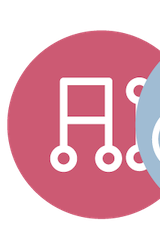Practical AI for Business Growth
Event: AI Field Day 7
Appearance: Utilizing AI Podcast
Company: The Futurum Group
Video Links:
- Vimeo: Practical AI for Business Growth
- YouTube: Practical AI for Business Growth
Personnel: Nick Patience, Stephen Foskett
Stephen Foskett and Nick Patience are introducing a new podcast called Utilizing AI, where they focus on the practical applications of artificial intelligence in enterprises to drive efficiency, improve decision-making, and foster innovation. They invite listeners to participate in weekly episodes that discuss practical AI applications within various business sectors, offering insights and examples of real-world outcomes from incorporating AI technologies. The episodes will also explore AI Field Day events and analyze insights from The Futurum Group’s research and AI practice.
The podcast’s first episode was recorded live during AI Field Day in Santa Clara, bringing various groups together, including individuals from TechStrong, Tech Field Day, and Futurum’s research and analyst team. They aim to present different perspectives on how AI can be transformative within enterprise IT, presenting AI as a pervasive general-purpose technology impacting various facets of business operations. Highlights from the discussion included upcoming AI Field Day events, planned appearances at industry conferences, and an exploratory overview of significant players and their roles, such as AWS, Google, and Oracle, in the AI ecosystem. The podcast intends to focus on keeping up with the fast pace of AI developments and distinguishing meaningful trends and innovations from fleeting ones.
They shared insights into AI’s impact on industries and detailed upcoming plans and discussions related to AI usage. As AI continues to evolve and impact various industries differently, there’s an emphasis on enterprise adoption of AI technologies to automate processes, improve customer service, and optimize operations. The team plans to highlight practical examples and discuss how businesses can navigate the rapidly-changing AI landscape, balancing the fear of missing out with the day-to-day operational needs. The podcast is set to respond to weekly changes and announcements in the AI field, continuously aiming to inform and discuss the current state and future of AI technologies.







